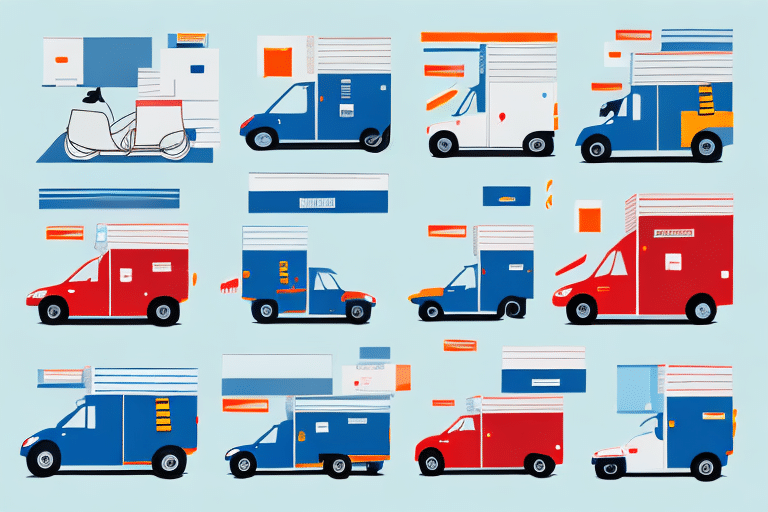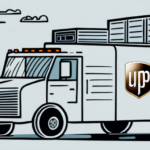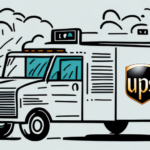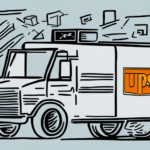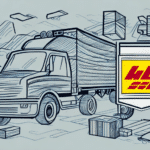Discovering the Fastest Postal Service: A Comprehensive Guide
Are you in the market for the fastest possible postal service? Look no further! This comprehensive guide provides an in-depth analysis of postal services, comparing major carriers across the globe, offering detailed insights on how to choose the right service for your needs, and more. Whether you're sending important documents for business or personal reasons, or need a reliable and speedy delivery service for packages and parcels, this guide has got you covered.
The History of Postal Services and Their Evolution Over Time
Early Beginnings
Postal services have a rich history dating back to ancient times. The first recorded postal system was established in ancient Persia around 550 BC, where couriers carried messages by horseback. In ancient Rome, the cursus publicus was a state-run courier and transportation service that played a crucial role in maintaining communication across the empire.
Industrial Revolution and Technological Advancements
The introduction of steam trains in the mid-19th century revolutionized postal services, significantly reducing delivery times and expanding the reach of mail carriers. According to the History Channel, the steam engine enabled the transportation of mail across vast distances more efficiently, laying the groundwork for modern postal systems.
Digital Age and Modern Challenges
In recent decades, the advent of the internet and electronic communication has transformed the postal service industry. Traditional mail volumes have declined, with a Statista report indicating a steady decrease in letter mail volumes. To adapt, postal services have diversified into logistics and package delivery, partnering with e-commerce giants to handle last-mile deliveries.
A Comparison of Major Postal Services Across the Globe
United States Postal Service (USPS)
USPS is one of the largest postal services worldwide, delivering to over 160 million addresses in the United States. Known for its affordability and extensive reach, USPS offers various services including Priority Mail and Express Mail, catering to different delivery speed and budget requirements.
Canada Post
Canada Post serves over 15 million addresses across Canada. It is renowned for its "FlexDelivery" service, allowing recipients to choose where and when to receive their packages. According to the official Canada Post website, their advanced tracking systems ensure high reliability and customer satisfaction.
International Carriers: DHL, FedEx, UPS, and TNT
International carriers like DHL, FedEx, UPS, and TNT offer global shipping solutions with a focus on speed and reliability. For instance, DHL operates in over 220 countries and territories, leveraging a vast logistics network to provide expedited shipping services. These carriers often provide additional features such as real-time tracking, insurance options, and customizable delivery solutions to meet diverse customer needs.
Comparative Analysis
Choosing the right postal service depends on factors like budget, shipping times, destination, and additional services. For example, USPS is typically more affordable for domestic shipping within the U.S., while DHL and FedEx are preferred for international shipments due to their extensive global networks and faster delivery options.
How to Choose the Right Postal Service for Your Needs
Assessing Your Requirements
Determine the nature of your shipment—whether it's a document, package, or oversized item. Consider the required delivery speed, budget constraints, and the destination. For urgent deliveries, services like FedEx Express or UPS Next Day Air might be ideal, whereas USPS Media Mail offers cost-effective options for shipping media items at slower speeds.
Evaluating Tracking and Insurance Options
If you're sending valuable or time-sensitive items, opt for a postal service that provides comprehensive tracking and insurance. According to the FedEx Insurance page, insured shipments offer protection against loss or damage, providing peace of mind for both sender and recipient.
Considering Environmental Impact
With growing environmental concerns, some postal services prioritize sustainability. For instance, UPS has implemented initiatives like using electric vehicles and optimizing delivery routes to reduce carbon emissions. Choosing an eco-friendly postal service can contribute to reducing your environmental footprint.
Speed vs. Cost: Finding the Balance
Understanding Service Tiers
Postal services offer various service tiers that balance speed and cost. For example, USPS offers First-Class Mail for economical and non-urgent deliveries, while Priority Mail provides faster delivery at a higher cost. International carriers like DHL and FedEx offer expedited services that guarantee quicker delivery times but come at a premium.
Cost-Benefit Analysis
Conduct a cost-benefit analysis based on your specific needs. If speed is paramount, investing in a faster service might be justified. Conversely, for non-urgent shipments, opting for a slower, less expensive service can save costs without compromising essential timelines.
Regional Considerations
The efficiency and cost-effectiveness of postal services can vary by region. For instance, USPS is highly efficient within the United States, whereas local services like Canada Post excel in their respective countries. Evaluating regional performance can help in selecting the most suitable postal service.
Understanding Postal Service Shipping Options and Delivery Times
Common Shipping Options
- Standard Mail: The most affordable option with longer delivery times, typically used for non-urgent correspondence.
- First-Class Mail: Offers faster delivery than standard mail, suitable for letters and lightweight packages.
- Priority Mail: Provides expedited delivery with tracking and insurance options.
- Express/Overnight Delivery: Guarantees next-day or same-day delivery for urgent shipments.
Delivery Timeframes
Delivery times can vary based on the chosen service and destination. For example, USPS Priority Mail typically delivers within 1-3 business days domestically, while international shipments with DHL Express can arrive in as little as 1-3 business days depending on the destination.
Seasonal Variations
During peak seasons like holidays, delivery times may extend due to increased volume. It's advisable to plan shipments well in advance and consider expedited services to ensure timely delivery. According to the UPS support page, customers should account for additional processing times during high-demand periods.
Tips for Maximizing Efficiency in Your Postal Service Experience
To enhance your postal service experience, consider the following tips:
- Accurate Addressing: Always use correct and complete addresses to prevent delays and ensure accurate delivery.
- Secure Packaging: Package items securely to protect them from damage during transit.
- Appropriate Shipping Options: Choose the most suitable shipping option that balances speed and cost based on your needs.
- Utilize Tracking: Use tracking options to monitor the progress of your shipment and receive real-time updates.
- Understand Shipping Restrictions: Be aware of any shipping restrictions or requirements for specific items to avoid issues.
Additionally, stay informed about potential delays caused by factors like weather conditions or operational disruptions. Keeping a record of your tracking number and shipping details can help address any issues promptly.
How Technology is Changing the Postal Service Industry
Automation and Sorting Technologies
Advancements in automation have transformed postal operations. Automated sorting machines expedite the processing of mail and packages, increasing efficiency and reducing human error. According to a study published in the Journal of Logistics, automation can improve sorting accuracy by up to 99%, significantly enhancing delivery reliability.
Digital Communication and E-invoicing
The integration of digital communication tools has streamlined postal services. Online tracking portals, electronic billing, and automated customer notifications provide greater transparency and convenience for users. These technologies enable customers to manage their shipments more effectively and stay informed about delivery statuses.
Innovative Delivery Methods
Emerging technologies like drones and autonomous vehicles are poised to revolutionize last-mile delivery. Companies like Amazon are experimenting with drone deliveries to reduce delivery times and operational costs. While still in the experimental phase, these technologies hold the potential to enhance delivery efficiency and expand service capabilities.
The Impact of COVID-19 on Postal Service Operations and Shipping Delays
Operational Challenges
The COVID-19 pandemic significantly disrupted postal service operations worldwide. Increased demand for online shopping led to higher shipping volumes, while lockdowns and social distancing measures imposed operational constraints. According to a report by the UPS newsroom, many carriers experienced delays and capacity issues during peak periods of the pandemic.
Adaptations and Safety Measures
Postal services implemented various safety measures to protect employees and customers, including contactless deliveries, enhanced sanitization protocols, and limited office hours. These measures, while essential for health safety, contributed to longer processing and delivery times.
Long-term Effects
The pandemic accelerated digital transformation within the postal industry, emphasizing the need for robust online services and flexible delivery options. As a result, many postal carriers have continued to enhance their digital infrastructures and adopt more resilient operational strategies to better handle future disruptions.
Sustainability in the Postal Service: Eco-Friendly Options and Initiatives
Green Shipping Practices
Postal services are increasingly adopting eco-friendly practices to reduce their environmental impact. This includes carbon-neutral shipping options, the use of electric delivery vehicles, and optimizing delivery routes to minimize fuel consumption. For example, DHL's GoGreen initiative aims to improve environmental performance by reducing greenhouse gas emissions and promoting sustainable logistics solutions.
Eco-Friendly Packaging
Choosing environmentally friendly packaging materials is another way to contribute to sustainability. Many postal services offer recyclable and biodegradable packaging options. Additionally, customers can opt for reusable packaging to further minimize waste.
Renewable Energy and Sustainable Facilities
Some postal services are integrating renewable energy sources into their operations. For instance, UPS has invested in solar panels and wind turbines to power their facilities, reducing reliance on fossil fuels. Energy-efficient lighting and HVAC systems are also being implemented to lower energy consumption and operational costs.
Community and Environmental Partnerships
Collaborating with environmental organizations helps postal services promote sustainability and conservation efforts. Partnerships may include participating in community clean-up events, donating to environmental causes, and supporting initiatives that aim to protect natural resources.
Improving Customer Satisfaction with Effective Communication and Tracking Tools
Real-Time Tracking Systems
Modern tracking systems provide customers with real-time updates on their shipments, enhancing transparency and trust. Services like FedEx Tracking allow users to monitor the progress of their packages from dispatch to delivery, reducing uncertainty and improving the overall customer experience.
Enhanced Customer Support
Accessible and responsive customer support is crucial for maintaining high levels of satisfaction. Many postal services offer multiple channels for customer support, including phone, email, live chat, and social media. Quick and effective resolution of issues contributes to increased customer loyalty.
Automated Notifications and Alerts
Automated notifications keep customers informed about important events related to their shipments, such as dispatch confirmations, transit updates, and delivery confirmations. These alerts help customers stay informed and prepared for their deliveries.
User-Friendly Online Platforms
Intuitive online platforms and mobile applications enable customers to easily manage their shipments, print labels, schedule pickups, and access support resources. A seamless digital experience enhances convenience and satisfaction.
Future Trends in Postal Services and What to Expect
Integration of Advanced Technologies
The future of postal services will likely involve further integration of advanced technologies such as artificial intelligence, machine learning, and robotics. These technologies can optimize logistics, predict delivery patterns, and automate routine tasks, leading to increased efficiency and reduced operational costs.
Expansion of Drone and Autonomous Deliveries
Drones and autonomous vehicles are expected to play a significant role in the future of last-mile delivery. These technologies offer the potential for faster, more flexible, and cost-effective delivery solutions, especially in urban and remote areas.
Personalization and Customized Services
Postal services are moving towards offering more personalized and customized services to meet diverse customer needs. This includes flexible delivery options, tailored shipping solutions, and enhanced customer interactions through digital platforms.
Emphasis on Sustainability
Environmental sustainability will continue to be a major focus, with postal services adopting greener practices and investing in sustainable technologies. Customers are increasingly prioritizing eco-friendly options, driving postal services to innovate in this area.
Globalization and Cross-Border Shipping
As global trade and e-commerce continue to grow, postal services will expand their international networks and improve cross-border shipping capabilities. Enhanced global partnerships and streamlined customs processes will facilitate faster and more reliable international deliveries.
By considering the factors outlined in this guide, you can make an informed decision on the fastest postal service for your needs. Remember to balance speed and cost, research each option thoroughly, and consider additional factors such as tracking options and eco-friendliness. With these tips, you can optimize your postal service experience and ensure timely and accurate delivery every time.













